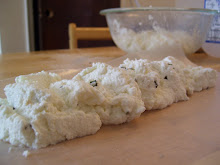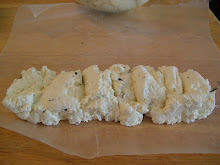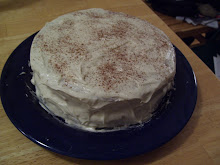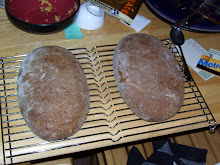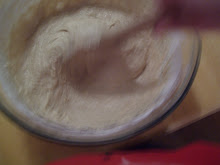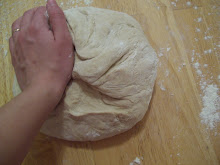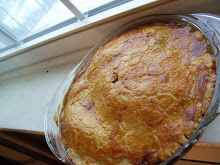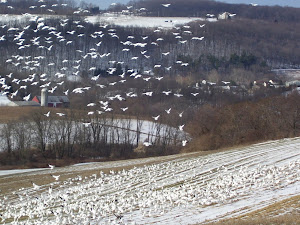However we live in very different times. The foods that abound in our contemporary culture in this country are sterilized, homogenized, and without character. Strong tastes have been blotted out of our meals. Our only opportunity for strong tastes lies in the Chili Festival once a year where our tongue is limited to spicy foods. We don’t have the opportunity to experience other complex savory tastes, besides the protein-reminiscent saltiness of MSG. Indeed, most foods taste identical to each other with only some differences in texture. At one time one single food was made up of quite dynamic tastes. One bite of cheese might yield a somewhat sweet and creamy taste, while the next bite of the same cheese would have a more woody, almost crunchy bite to it. A bottle of raw milk, a loaf of fresh baked bread, a jar of homemade sauerkraut, a glass of homebrew – all demonstrate a dynamic and growing taste. No single taste is exactly like the other. All of these ancient crafted foods are quite different from their supermarket “equivalents.” The products sold on the shelves of grocery stores are just that – products meant to be quickly made, distributed, and prepared as a pseudo-meal on the go. The only step in this product’s life that requires any amount of slowness or “inconvenience” is its digestion, for all these foods take quite a toll on the body. All of this for a supposedly “safe” and “normalized” product. These ancient foods have disappeared, but a great are threatened to disappear through loss of knowledge, tightened food regulations, and industrialization.
What has become evident is that it is not only our food that has become homogenized and sterilized in the efforts of industrial mass production. These efforts extend right into the very nub of our culture, affecting each and every individual. Our own lives are held to a common pressure towards “safe” and “normalized” behavior. This pressure seems to have increased with the rise of industrialization. Imagine the loss of imagination that takes place over time when the infinite and localized varieties of bread, seed, cheese, beer/ale, wine, fruits, vegetables, meats, and preserves produced by each town and cottage is reduced to those produced by a mere handful of large food corporations. Our food is bland in taste because it must have “universal” appeal and thus possess no extreme and no bent toward a particular localized taste. Thus it becomes the standard taste. This loss of imagination and diversity in our food is reflected in our own society. As a whole we gather in groups based on taste, if you will. Since localities are no longer an issue, we unite based on interests and likes, which take predominance over all else. Thus, we are often surrounded by what we like to call “like minds,” as if this were a choice of intellect. There are those that might identify themselves as deviating from the norm, but quite often those individuals leave their original community and join another community with people that are deviant in the same way. Thus the cycle of homogenization continues.
I can’t help but hope that food could help us break out of this cycle. Certain ancient foods are threatened, but with a little time, creativity, research, and experimentation at least some of these foods can be removed from the endangered list. It is quite difficult to exile foods. Some ancient Foods live on as a way of life, reminiscent of the spirit of the seasons, time and the hearth. They become a rhythm of survival, of nurturing, and of bounty. Despite the efforts of various governing bodies and corporations, these foods cannot be outlawed. Indeed they will be served at my table and shared with my guests. There are some feasts that are public acts of deviance.
